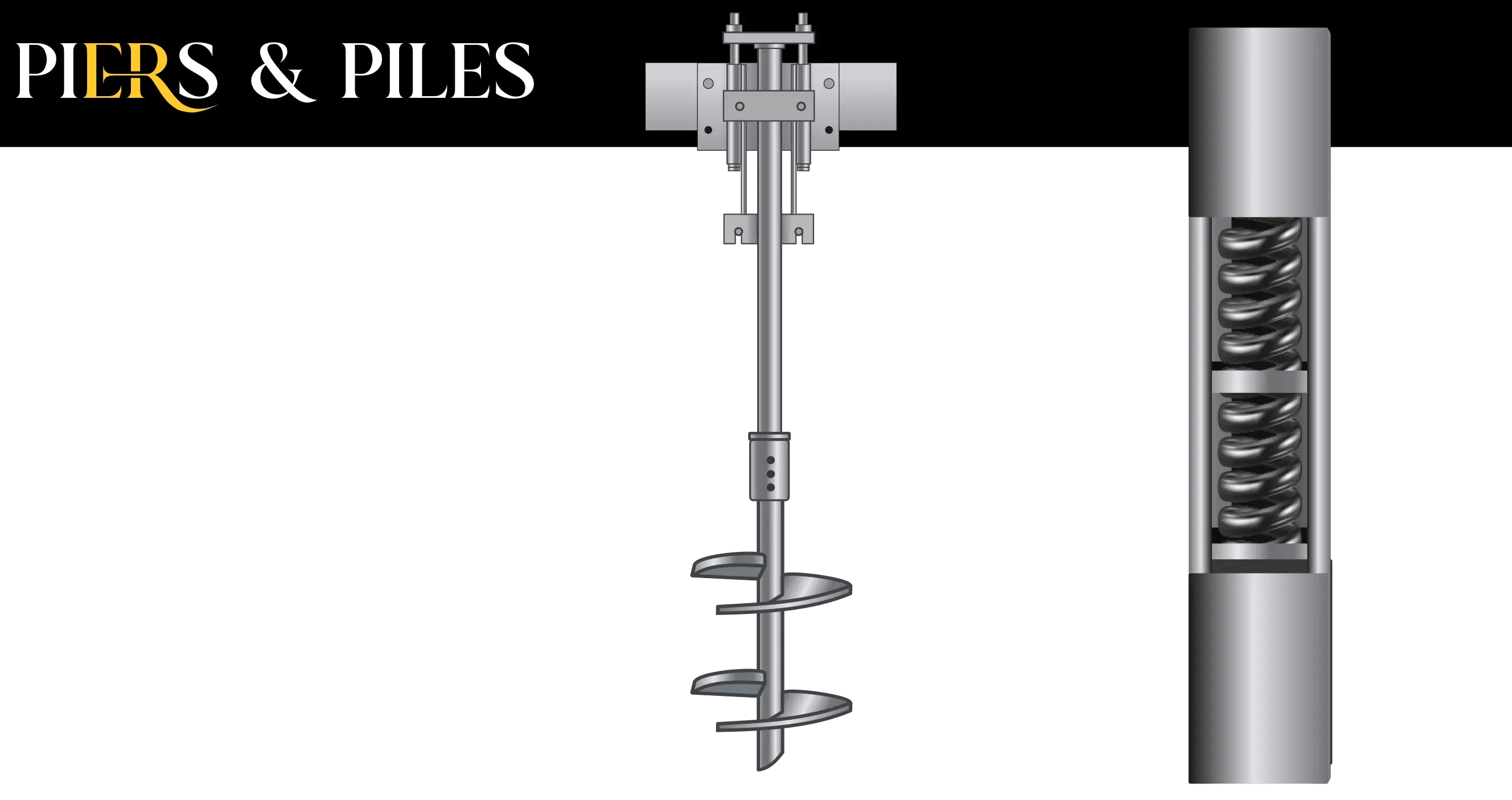
How Deep Do Helical Piers Go?
Helical piers are critical components in foundation support, providing stability for structures built on unstable or weak soils. But how deep do helical piers go? The answer depends on various factors, including soil conditions, load-bearing requirements, and the specific construction project. These piers are designed to transfer a building’s weight to deeper, more stable soil or bedrock, ensuring long-term structural integrity.
At Piers and Piles, we specialize in expert helical pier installations across Long Island, Brooklyn, and Queens. With over 20 years of experience, we provide tailored solutions for residential and commercial projects, helping to ensure stable foundations in New York’s diverse soil conditions.
Need a Custom Evaluation? Contact Us for a Consultation to Determine the Ideal Foundation Solution for Your Project.
Factors That Determine Helical Pier Depth
When installing helical piers, several key factors influence how deep they need to be placed to provide stable, long-lasting support. From soil conditions to the load-bearing requirements of the structure, these variables play a crucial role in determining the appropriate depth for optimal foundation stability.
Here are the main factors that impact the depth of helical piers:
- Soil Conditions: The soil type beneath a structure significantly impacts how deep helical piers must go. Softer soils like clay or sand often require deeper piers to reach stable layers, while bedrock offers immediate stability at shallower depths.
- Load-Bearing Requirements: The weight of the building or structure plays a significant role in determining pier depth. Heavier structures need deeper piers to distribute the load properly and prevent settlement or shifting over time.
- Frost Line and Seasonal Considerations: In New York, frost heaving can cause foundations to shift during freeze-thaw cycles. Helical piers must be installed below the frost line, ensuring seasonal ground movement doesn’t impact the foundation’s stability.
Average Depth of Helical Piers in New York
The depth of helical piers can vary significantly depending on the type of project and local soil conditions in New York. In coastal areas like Long Beach, where sandy soils are common, piers often need to be driven deeper to reach stable strata. Similarly, neighborhoods in Jamaica, Queens, known for flooding due to high water tables, may require piers to extend deeper to ensure proper load-bearing capacity. Whether for residential homes or larger commercial buildings, the goal remains the same: providing long-term stability through secure, deep support.
Residential Projects
For most residential homes, helical piers in New York typically reach depths of 10 to 25 feet. This ensures they bypass any unstable surface soils and get a stable stratum, often just above or on bedrock.
Commercial and Industrial Projects
Depending on the load requirements and soil conditions, more significant commercial and industrial buildings may require helical piers to go deeper—anywhere from 30 to 60 feet. These deep foundation systems ensure that even the heaviest structures remain stable over time.
Installation Process and Pier Depth Measurement
Understanding the depth helical piers need to reach is crucial before installing them. The helical piers installation process involves thorough pre-installation planning and precision during the pier placement to ensure proper support. This section will explain how soil testing and real-time monitoring help determine the optimal depth for your piers, ensuring your foundation is stable and secure.
Pre-Installation Soil Testing
Before installing helical piers, comprehensive soil testing and site surveys are conducted to determine the optimal depth for the piers. These tests assess soil conditions and load-bearing capacity, ensuring the foundation will be stable and secure.
Torque Monitoring
During installation, torque monitoring measures resistance as piers are driven into the ground. This ensures the piers reach sufficient depth and are installed into a stable soil layer or bedrock, providing the necessary support.
How Deep Do Helical Piers Go for Different Types of Soil?
The depth of helical piers can vary significantly depending on the soil type at the project site. Whether you are building on soft, sandy soil or more stable bedrock, the depth required to ensure adequate support will differ. This section will explore how soil conditions affect the depth to which helical piers must be installed to provide a solid foundation.
Soft Soil (e.g., Sandy or Silt)
In softer soils, such as sand or silt, helical piers typically need to be driven deeper, ranging from 20 to 60 feet, to reach stable layers supporting the structure.
Dense Soil or Bedrock
When installing piers in dense soil or bedrock, piers may reach depths of 10 to 30 feet, as they can anchor more securely in these stable, high-load-bearing layers.
Why Choosing the Right Depth Is Critical for Foundation Success
Installing helical piers at the correct depth is one of the most critical factors in ensuring the long-term success of your foundation. The correct depth ensures proper load distribution and reduces the risk of foundation failure. In this section, we’ll discuss why selecting the proper depth is critical for stability and how professional installation helps prevent costly mistakes.
How Deep Do Helical Piers Go: Final Thoughts
Factors like soil type, load requirements, and environmental considerations determine the depth of helical piers. Proper depth is crucial for ensuring the stability and durability of your foundation. For accurate assessments and professional installation, contact Piers and Piles for customized helical pier solutions across New York.
Contact Piers and Piles for an Expert Evaluation to Ensure Your Helical Piers Are Installed at the Ideal Depth for Long-Term Foundation Success.